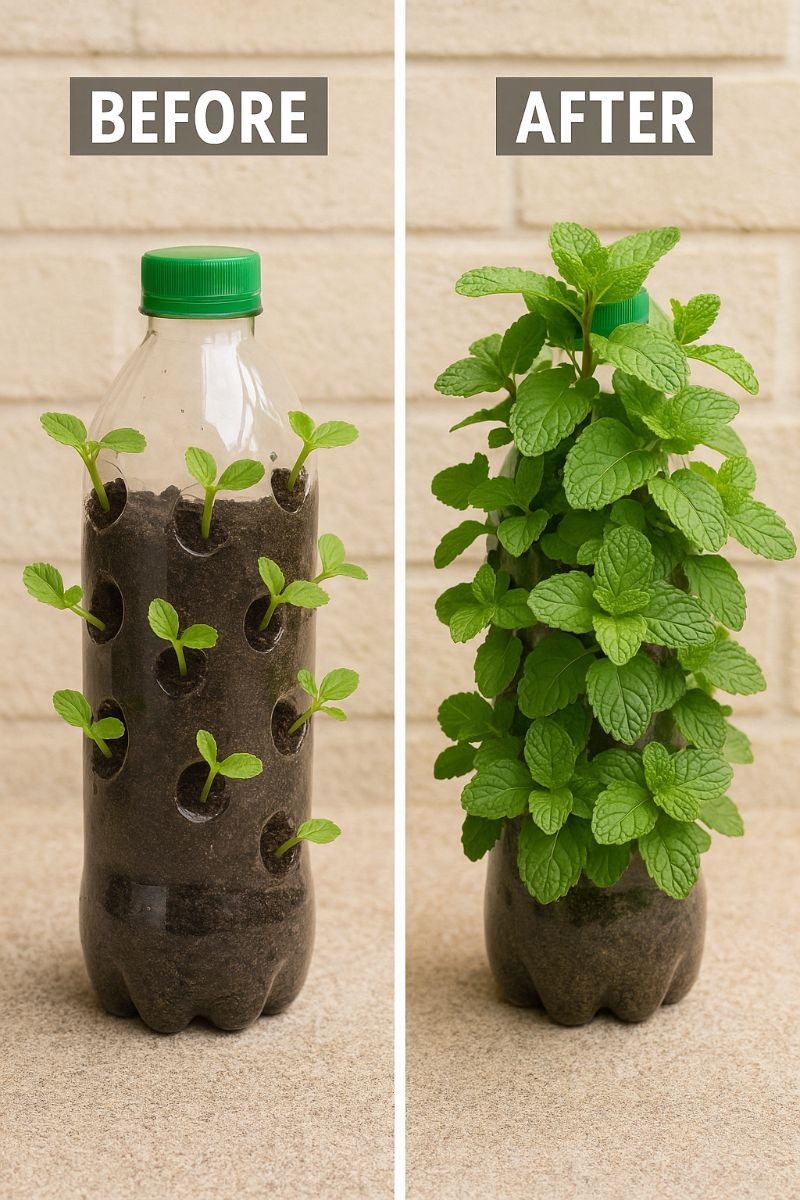8. Creating a Hanging System for Bottles
To hang your plastic bottle planters, cut a length of string or wire and thread it through the holes you made near the cut edge of the bottle. Tie the ends securely to create a loop for hanging.
Find a suitable location to hang your bottles, such as a balcony railing, a garden trellis, or a sturdy hook. Ensure the location receives adequate sunlight, as mint thrives in bright, indirect light.
9. Ensuring Proper Sunlight and Watering
Mint requires about 4-6 hours of sunlight per day, so choose a location that receives morning or late afternoon sun. Avoid harsh midday sun, which can scorch the leaves.
Water the mint regularly, keeping the soil consistently moist but not waterlogged. During hot weather, you may need to water more frequently. Check the soil moisture by inserting your finger about an inch deep; if it feels dry, it’s time to water.
10. Tips for Maintaining Healthy Mint Plants
To encourage bushy growth, regularly pinch back the tips of the mint stems. This will promote branching and prevent the plant from becoming leggy. Harvest the leaves frequently to keep the plant productive.
Fertilize the mint every 4-6 weeks with a balanced, water-soluble fertilizer to provide essential nutrients. Be cautious not to over-fertilize, as this can lead to excessive leaf growth with reduced flavor.
11. Troubleshooting Common Issues
If your mint leaves are turning yellow, it could be a sign of overwatering or poor drainage. Ensure the drainage holes in your plastic bottles are not blocked and adjust your watering schedule accordingly.
Pests such as aphids and spider mites can occasionally affect mint plants. To combat these pests, use a gentle insecticidal soap or a homemade solution of water and dish soap. Regularly inspect your plants for signs of infestation and address any issues promptly to maintain healthy growth.
ADVERTISEMENT

